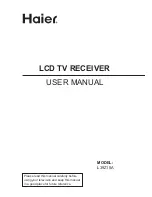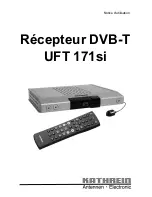
4
up to four transmitters assigned to it depending on the number of addresses assigned to the
receiver.
The 64 transmitters are divided into 4 groups of 16, with the transmitters in each group
numbered 1-16. One or more groups respond to each address assigned to the receiver. When
multiple groups respond to the same address, the corresponding transmitters in each group are
combined to determine the status to be reported for a zone.
The table below shows the address that each transmitter group responds to verses the number of
addresses assigned to the receiver.
NUMBER OF ADDRESSES ASSIGNED
1.00
2.00
3.00
4.00
1-16
1.00
1.00
1.00
1.00
17-32
1.00
2.00
2.00
2.00
33-48
1.00
1.00
3.00
3.00
49-64
1.00
2.00
1.00
4.00
The receiver can report status to 16 zones on an Aegis controller. Transmitters 1-16 report to
zones 17-32. If a 17th transmitter is used, the status of that transmitter is reported to zone 17;
the status of the 18th transmitter is reported to zone 18, etc.
The receiver can report status to 64 zones on an Aegis controller. When used with Aegis
controller, wireless transmitters report to zones 33-96.
INSTALLATION
Install the receiver in a central area of the premises, as high above ground as practical. The
receiver should be at least 5 feet from the controller or any other electronic device. The open
air range of SX format transmitters is 3500 feet. However, this will be reduced by building
construction as follows:
Wood and drywall 10%
Concrete and brick 35%
Steel, reinforced concrete, metal lath: 90%
When the location of the receiver has been established, remove the cover and position the
receiver so that the antenna connector is at the top right. Mount the receiver, using supplied
wall anchors and screws, through two mounting holes (upper left and bottom right). Allow at
least a 12 inch clearance to mount the antenna.






























